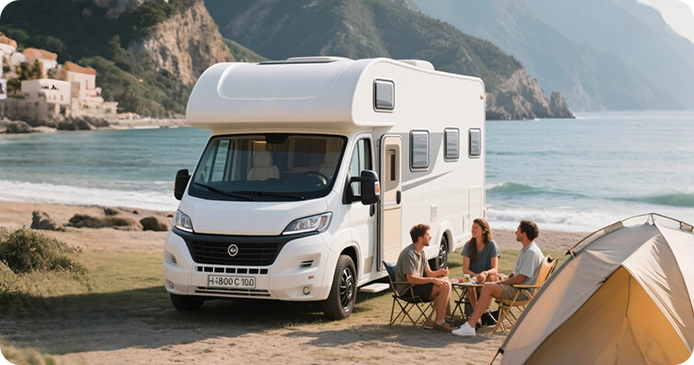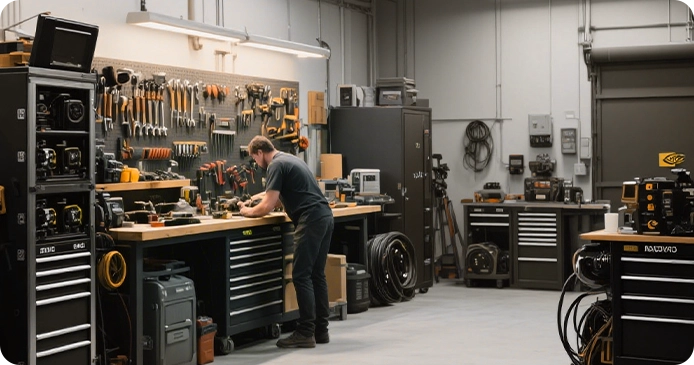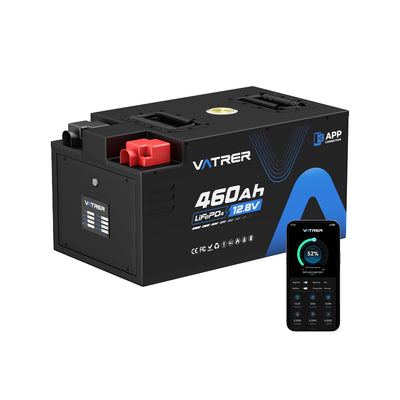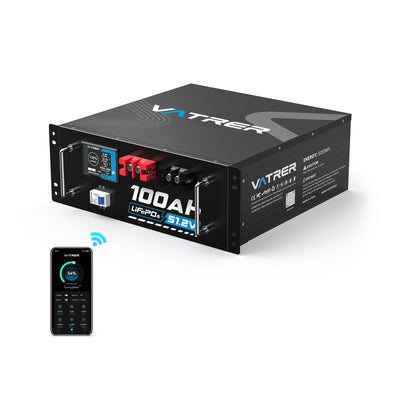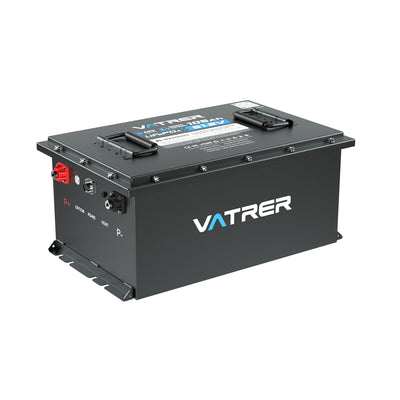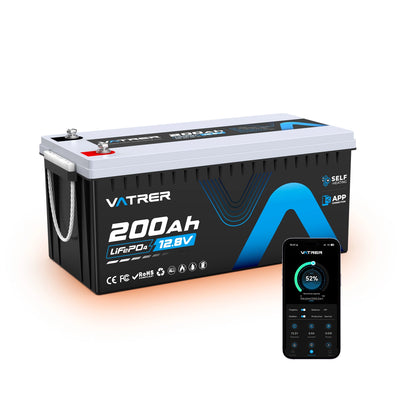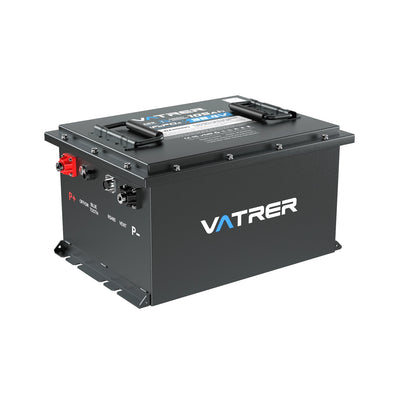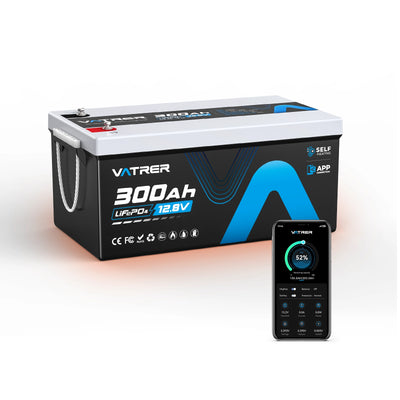Batteries in Series vs Parallel: Wire Like a Pro Without the Science Class Flashbacks
Reading time 5 minutes
Learn how to wire batteries like an electrician's favorite nephew. We'll show you when to stack voltage (series), extend runtime (parallel), or go full mad scientist (series-parallel) — with zero equations and plenty of real-life examples.
So you’ve got a bunch of batteries lying around, and you’re trying to figure out how to wire them up without turning your project into a DIY disaster.
Series or parallel?
Sounds like a question your high school science teacher would ask, right? Don’t stress — we’ll break it down like you’re chatting with a neighbor over a fence. By the end, you’ll know exactly how to juice up your RV, boat, or golf cart like a pro.
Why Wiring Batteries the Right Way Matters
Let’s start simple. Batteries are like your car’s gas tank — except instead of fuel, they store electricity.
How you connect them determines whether you get a bigger tank (longer runtime) or a faster engine (higher voltage). Mess this up, and you might end up with a dead battery bank or, worse, a melted mess. Not cool.
Here’s the deal: Series wiring stacks voltage like pancakes. Parallel wiring doubles your runtime like a BOGO deal. Mix them wrong, though, and you’ll learn why smoke smells bad. Let’s dive in.
Wiring in Series: When You Need More Oomph
Imagine you’re trying to power a trolling motor that needs 36 volts, but you only have 12V batteries. No problem. Wire three of them in series — positive to negative, negative to positive — and boom, you’ve got 36V. It’s like linking train cars: each battery adds its voltage to the total, but the runtime (amp hours) stays the same.
Example: Three 12V, 100Ah batteries in series = 36V, 100Ah. Perfect for gadgets that need a voltage kick, like golf carts or high-end trolling motors.V = 12V * 3 = 36V
Pros: Series setups let you use smaller, cheaper batteries to hit high-voltage goals. Plus, thinner wires work here because the current (amps) stays low. Think of it like sipping a drink through a straw instead of gulping from a firehose.
Cons: If one battery dies, the whole chain goes dark — like Christmas lights from the ’90s. Also, charging can get tricky. Batteries in series don’t always charge evenly, so you’ll want a battery management system (BMS) to play referee. Pro tip: Use identical batteries. Mixing a Walmart special with a Vatrer premium lithium is like pairing flip-flops with a tuxedo. It just doesn’t work.
Wiring in Parallel: For When You Need to Keep the Party Going
Now, let’s say your RV fridge keeps dying at 2 a.m., ruining your midnight snack game. Wiring batteries in parallel fixes that. Connect all the positives and all the negatives together, and you’ll keep the same voltage but double the runtime. It’s like adding extra gas cans to your truck bed — more miles, same speed.
Example: Two 12V, 100Ah batteries in parallel = 12V, 200Ah. Your RV lights stay on longer, your phone stays charged, and your cold beer stays cold. Priorities.100Ah * 2 = 200Ah
Pros: Parallel setups are forgiving. If one battery kicks the bucket, the others keep the lights on (just with less juice). Charging is simpler too — most 12V chargers can handle a parallel pack without fancy gear.
Cons: You’ll need thick wires to handle the higher current. Skimp here, and your wires might get hotter than a TikTok trend. Also, mismatched batteries in parallel can turn into a drama fest. One battery might hog all the charge or drain the others. Stick to the same brand, age, and capacity — like a boy band, harmony matters.
Series-Parallel: For the Ultimate Power Nerds
Sometimes, you need both voltage and runtime. Enter series-parallel wiring. This hybrid setup is like building a battery Voltron. Group batteries into series packs first, then wire those packs in parallel.
Real-World Example: Four 12V batteries → two pairs in series (24V each) → then wire those pairs in parallel. Result? 24V system with double the amp hours. Perfect for mega-RVs, solar setups, or boats that need to cruise all weekend.
The Fine Print:
This ain’t for beginners. You’ll need matching batteries, beefy wiring, and a BMS to keep everyone in line. But if you nail it, you’ll feel like Tony Stark powering the Iron Man suit.
How to Wire ‘Em Up (Without Burning Down the Shed)
For Series
- Line up your batteries like dominos.
- Connect the positive of Battery 1 to the negative of Battery 2. Repeat.
- Use a multimeter to check the total voltage. If it’s not adding up, you’ve got a loose connection — or a dead battery playing possum.
For Parallel
- Park the batteries side by side.
- Link all positives with thick cables, then all negatives.
- Connect your device to the opposite ends of the pack. This balances the load and keeps electrons from getting lazy.
Gear You’ll Need
- Heavy-duty cables (no dollar-store junk).
- Crimpers, heat shrink, and a healthy fear of sparks.
Charging: Don’t Be the Guy Who Fries His Prized Batteries
Series Charging: Use a charger that matches the total voltage of your pack. If you’ve got a 36V series setup, you need a 36V charger. Uneven charging? Blame it on mismatched batteries or a missing BMS.
Parallel Charging: Easy mode. A standard 12V charger works, but keep an eye on older batteries. They might slack off while the new ones do all the work.
Golden Rule: Never mix battery types. Lithium, lead-acid, and AGM batteries are like cats and dogs — they don’t play nice. Stick to one chemistry, and you’ll avoid meltdowns.
Common Questions (Because We Know You’re Still Side-Eyeing This)
Can I mix old and new batteries?
Technically yes, but realistically no. An old battery will drag down the new ones like a buddy who “forgets” their wallet every time you go out.
Which setup lasts longer?
Parallel = longer runtime. Series = higher voltage. Battery lifespan? That depends on how well you treat ’em. Keep ’em clean, charged, and out of extreme heat.
How many batteries can I connect?
Until your spouse complains about the clutter. Just kidding — there’s no hard limit, but keep it practical. More batteries mean more weight, cost, and complexity.
The Takeaway
- Series = Voltage boost (good for high-power gear).
- Parallel = Runtime boost (good for marathon sessions).
- Series-Parallel = Best of both worlds (for power-hungry nerds).
And hey, if this feels overwhelming, grab a lithium battery with a built-in BMS. They’re like the Tesla of batteries — smart, sleek, and hard to mess up.
Go forth and conquer your power needs. And remember: If you smell burning, unplug it first, then panic.
Share





























